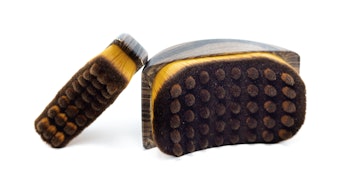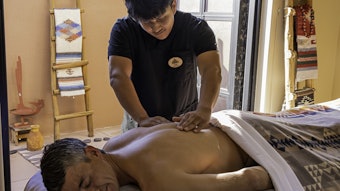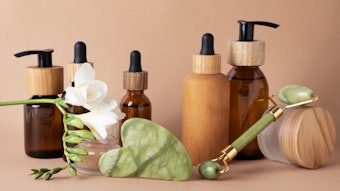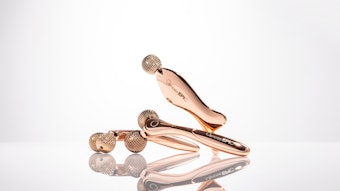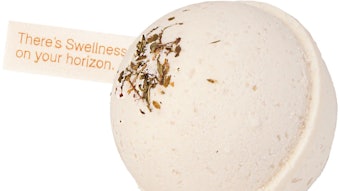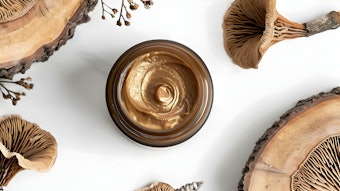Thailand has a well-deserved reputation for being the birthplace of several star techniques currently available in spas around the world. Treatments such as Thai massage and Thai detox water rituals are just a few of the techniques that developed out of the area’s folk
| An Herb for What Ails You Sweet basil: Headaches |
Compress comfort
Anyone who has experienced a massage involving a Thai herbal compress knows it is a very relaxing way to ease pain. However, there is much more to these sachets of aromatic herbs than simply relaxation and stimulation.
The origin of the herbal compress dates back to the Ayutthaya Period, which ran from the 14th to the 18th century, when the compress was mainly administered to soldiers returning home from wars with neighboring countries. These soldiers suffered from a variety of maladies, including back pain, sprains, skin diseases and inflammations. Upon reaching their homes—most likely after a long elephant ride or rowing in a river barge—the soldiers would be given a traditional Thai massage by their wives or mothers that, at the very end, would include a warm sachet with aromatic herbs applied to specific points of the body. The sachets often contained ingredients such as ginger, turmeric, galangal, tamarind leaves, lemongrass, pandanus leaves, camphor, Kaffir lime, sweet basil, plai and bergamot peel.
And just like Thai massage, the herbal compress is meant to allow the proper flow of energy through the body’s energy lines. Energy blockages are believed to hurt the body, so the need to unblock them is very important in Thai medicine.
Creating the compress
Because Thais are famous for passing down wisdom from one generation to the next, herbal compresses have found their way to present times, and the traditional ingredients of an herbal compress are typically readily available in the street markets of Thailand. Many of the herbs are closely associated with Thai cuisine and are widely used in Thai dishes, meaning that preparation often does not pose major difficulties.
The herbal compresses, which are preferably made with terry cloth, steam when heated, allowing the skin and body to absorb the healing qualities of the herbs through the pores. The compresses are most often used in the reduction of inflammation and pain, while also producing a blissful and uplifting sensation in the body. Even before the compress touches the skin, the scent emanating from the sachet being heated over the steamer gives a rich preview of what’s to come. See An Herb for What Ails You for a list of the various medicinal benefits of different types of herbs.
As herbal compress ingredients such as ginger, lemongrass and tumeric are renowned for promoting health when eaten, the magic of these herbs works just as well when applied to the skin. The ingredients used in a traditional recipe from Wat Po, the historic institution where the original manuscripts of Thai massage are kept, are famous for being antiseptic and antibacterial, as well as refining pores, increasing skin elasticity and having an anti-inflammatory effect. To get the recipe for this ancient compress, see A Traditional Remedy.
Warming benefits
Heat therapies are essential in the Asian healing process, and there are other varieties of the herbal compress, including Laotian, Japanese, Chinese and Indonesian versions. The main difference between each of these is that most often the ingredients used in the sachet pouch are indigenous to the region.
Warm herbal compress therapy can also offer benefits such as the reduction of swelling and tissue contraction, an improvement of circulation, the relaxation of sore muscles, an increase in lymphatic drainage and a reduction of joint seizures. It is also important to keep in mind that heat therapy is very effective in melting away tension, especially when applied on the upper back, shoulders and neck. And on top of all of these health attributes, there is the added benefit of enjoying a massage, the warm feel of the sachet and its lovely herbal scent.
It is advisable to have a Thai or other type of dry massage before applying an herbal compress, mainly due to the fact that the ingredients of the compress are better absorbed into the body through dry skin. If you decide to pair it with a Swedish or other massage performed with oil, pores may be blocked and it will be more difficult for the ingredients to be absorbed. The compress is typically applied directly on the skin or through the clothes for about 15–30 minutes following a massage.
Sachet search
Even though compresses were originally used as a home remedy only, many herbally blended sachets are currently available in
| A Traditional Remedy Directions for use |
In Thailand and other Asian countries, the sachets can be found in beauty shops and even department stores. However, the best place to buy them in the United States is massage schools and institutes, as they often sell the sachets at the most affordable prices.
Adventurous souls may consider making their own sachets to help provide herbal healing to clients, but it is important to know that it is often cheaper and more advisable to buy compresses from a manufacturer with a good reputation because they contain ingredients that have been properly dried and sterilized. Also, making a sachet properly is a lengthy process that requires expertise. An herbal compress should be either very fresh and made with herbs recently bought at the market, or properly dried and sterilized, which is usually most cost-effectively done by manufacturers.
Herbal incorporation
Not many spas in the United States are offering this type of herbal therapy yet, so it is likely a unique and novel service that can help set your spa apart. When offering herbal compresses as part of your menu, remember it is not really a treatment by itself, but rather a complement to other therapies. The compress typically doesn’t last any longer than 30 minutes, so it is best sold as an add-on to Thai or other massages and also can be included in packages with Asian therapies and scrubs. By adding the herbal compress to an offering, though, you can give your services an even more oriental and exotic image.
Another great thing about the compresses is that the herbs do the work by themselves, meaning there is no need for therapists to receive extensive training before offering compress services to clients. This means little training investment.
One of the best ways to introduce herbal compresses to a spa’s menu is to, for a short time, simply offer it as a complimentary add-on for clients who come to the spa for massage services. By adding a five- to ten-minute Thai herbal compress session to the end of select offerings, clients become familiar with it and begin to request it as part of their spa packages. Also, by adding the compress to spa kits, you can have clients who are particularly interested in aromatherapy asking about it immediately.
Some spas have even begun to sell the sachets to clients for take-home use. They can typically be used about five times, which means a client will need to come back to the spa for more when they run out.
The compresses can come in a variety of sizes, so you can give them as a gift or gift-with-purchase to clients, or even suggest clients give them as a gift themselves. Women often find that husbands and boyfriends who try the herbal compress therapy typically love the effects.
A sprinkle of herbs
An aromatic richness, warm, soothing touch, and the holistic healing properties of herbs make these compresses an excellent addition to any menu. Whether including lemongrass, tumeric, ginger or a combination of a little of everything, these soothing sachets will likely leave your clients asking for more.
